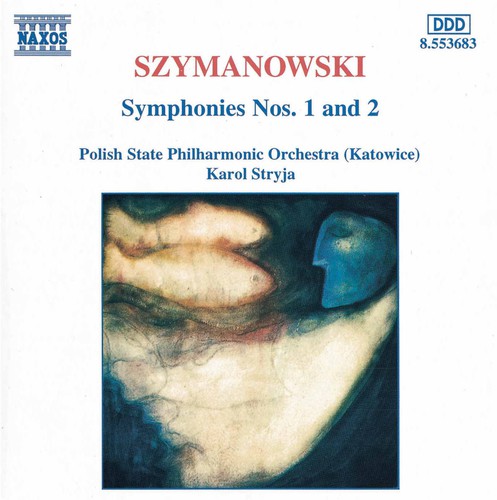Show results for
Deals
- 4K Ultra HD Sale
- Action Sale
- Alternative Rock Sale
- Anime sale
- Award Winners Sale
- Bear Family Sale
- Blu ray Sale
- Blues on Sale
- British Sale
- Classical Music Sale
- Comedy Music Sale
- Comedy Sale
- Country Sale
- Criterion Sale
- Drama Sale
- Electronic Music sale
- Golden Age of Hollywood sale
- Horror Sci fi Sale
- Kids and Family Sale
- Metal Sale
- Music Video Sale
- Musicals on Sale
- Mystery Sale
- Naxos Label Sale
- Page to Screen Sale
- Paramount Sale
- PBS on Sale
- Rap and Hip Hop Sale
- Reggae Sale
- Rock
- Rock and Pop Sale
- Rock Legends
- Soul Music Sale
- TV Sale
- Vinyl on Sale
- War Films and Westerns on Sale

Symphony 1 & 2
- Format: CD
- Release Date: 3/18/1997

Symphony 1 & 2
- Format: CD
- Release Date: 3/18/1997
- Composers: Karol Szymanowski
- Conductors: Karol Stryja
- Orchestras: Polish State Philharmonic Orchestra
- Label: Naxos
- UPC: 730099468329
- Item #: NAX946832
- Genre: Classical
- Release Date: 3/18/1997

Product Notes
Symanowski described his Symphony No.1 in F minor as "Monstrum kontrapunktyczno-harmoniczno-orkiestrowe". A Polish critic later castigated the work as "gigantic but insincere, orchestrally more orgiastic and virtuosic than musical, extremely heavy and thick in texture". The composer certainly found the symphony unsatisfactory as he turned away from Wagner, whom he came to regard as full of empty rhetoric. In retrospect, however, the two-movement symphony may be seen to have a strength and purpose of it's own, even if it did not lead Szymanowski further in that particular musical direction. Szymanowski summarised succinctly enough the plan of his Symphony No.2 in B flat major, writing of "the first movement in a grand manner, the second movement- a theme and nine variations, the adagio and finale with a fugue". He expressed satisfaction with his achievement, feeling that he had overcome the inconsistencies of his earlier work, opening new doors, at least in his own style of composition. At the same time he suggested an element of what he described as "Zopfmusik", academic, a reference presumably to the traditional forms of which he makes use. In 1934, with the help of Fitelberg, he revised the orchestration, in an attempt to clarify the structure.

